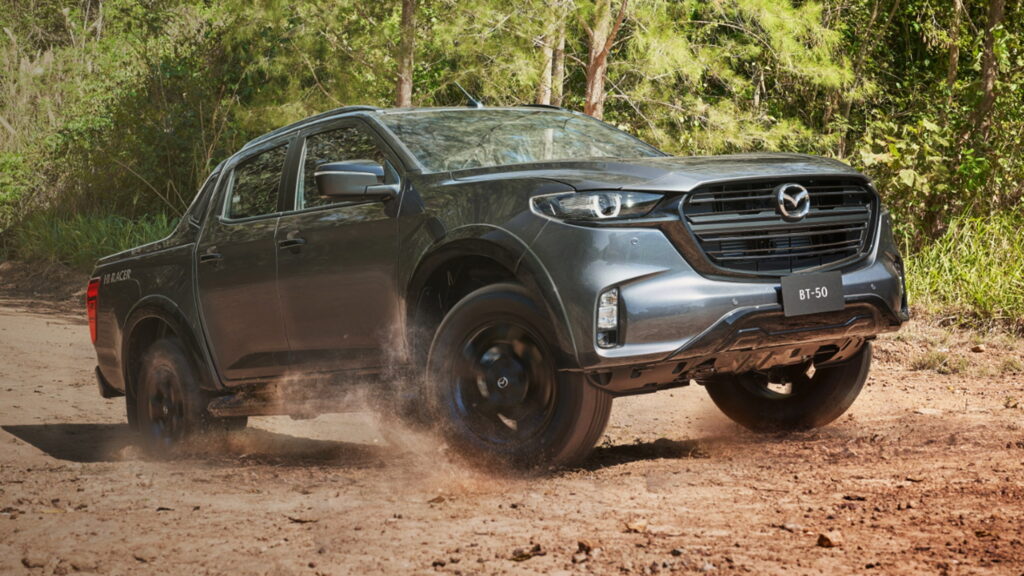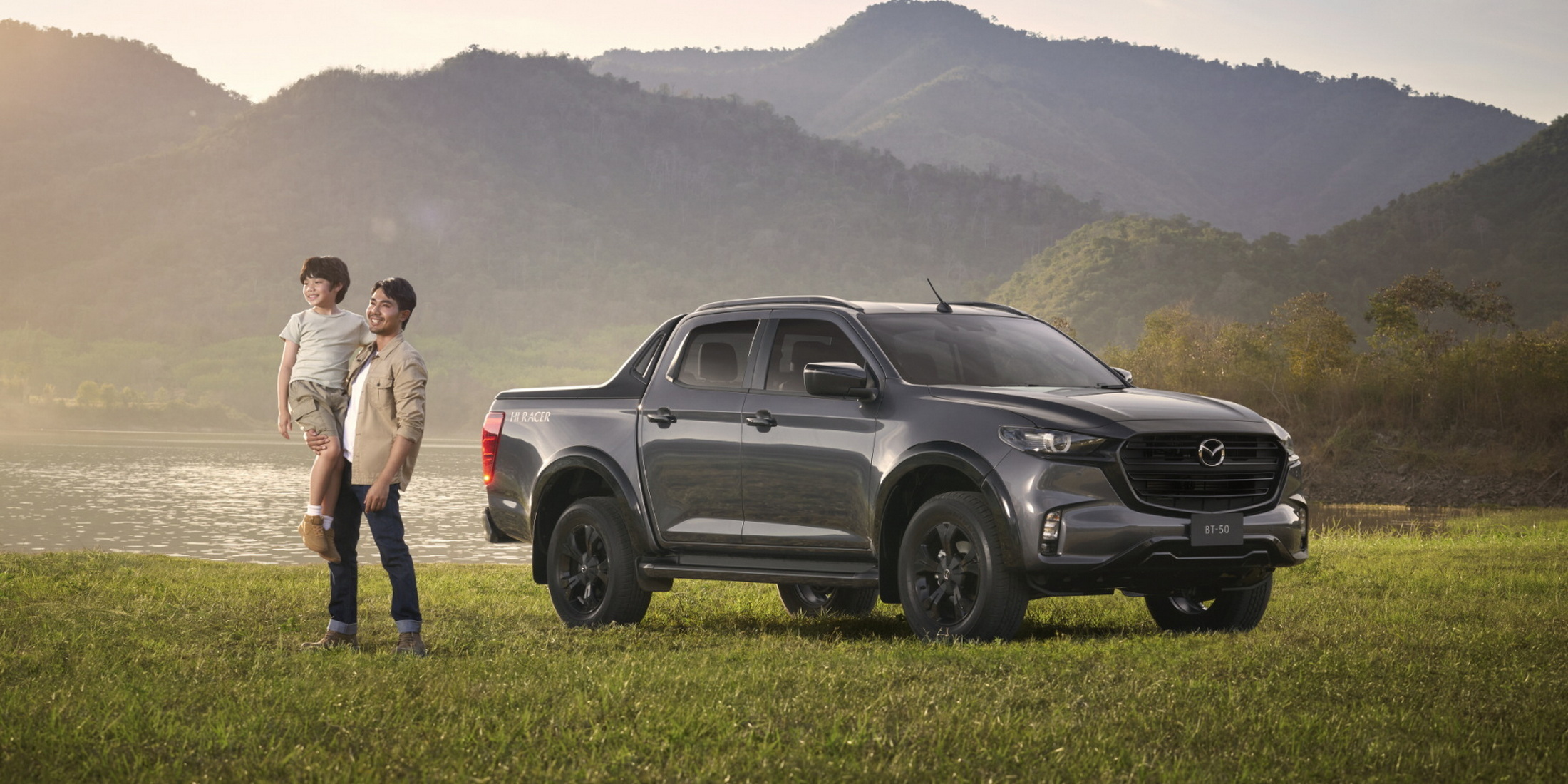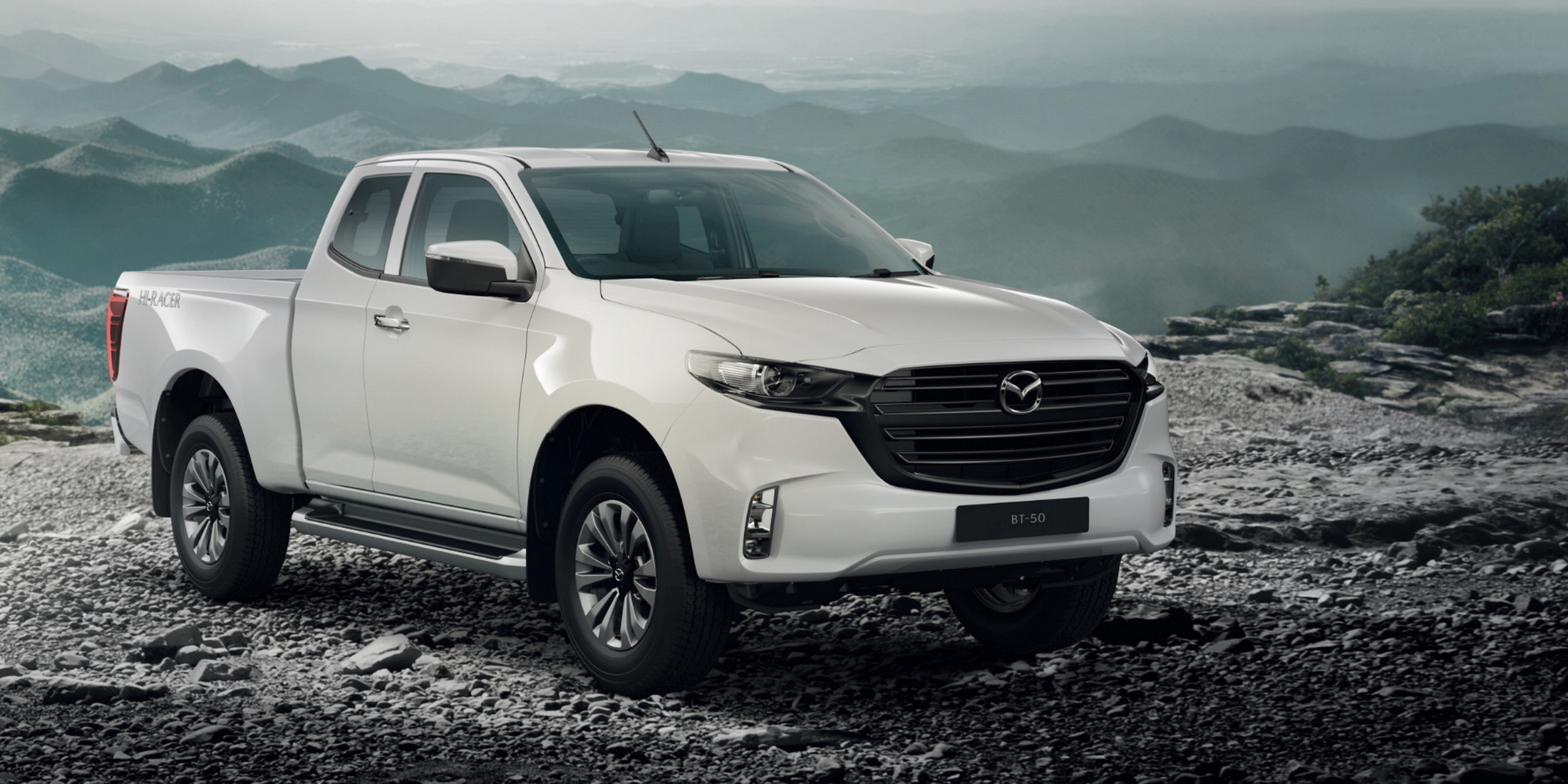- For 2024, the Mazda BT-50 receives a minor facelift with a black grille across all trims, a revised front bumper, and an optional “Black Thunder” accessory package for a more aggressive look,
- A new “Black Thunder” accessory package is available for high-spec models.
- The launch date for the updated BT-50 in other markets such as Austrlia is unclear.
The Mazda BT-50 underwent a subtle facelift in Thailand, primarily concentrating on exterior design enhancements, while retaining its existing turbodiesel powertrains. The timing of its release in other markets, such as Australia, remains unclear. Interestingly, Mazda’s midsize pickup doesn’t inherit the technological updates introduced by the mechanically-related Isuzu D-Max which was facelifted a few months ago.
The design of the Mazda BT-50 hasn’t changed much, despite the fact that it has been on sale since 2020. The most important update for 2024 is the adoption of the black grille from the flagship SP across all trims, replacing the chrome finish seen in the previous model. Additionally, the front bumper has undergone slight tweaks, now featuring a more robust skid plate on higher-spec variants.
More: Mazda BT-50 Improves Its Off-Road Credentials With Two New Accessory Packs
Furthermore, the new “Black Thunder” accessory set is available for high-spec trims, adding a rugged skid plate at the front, a sports bar, and fender extensions, all finished in gloss black. The same treatment has been applied to the door handles, mirror caps, and 18-inch alloy wheels.
In terms of body styles, the Mazda BT-50 offers two options: the Freestyle Cab, featuring two doors and an extended rear bed, or the Double Cab, with four doors and a roomier five-seater cabin.
Moving to the interior, the Mazda BT-50 retains its 9-inch infotainment touchscreen (or 7-inch in base models), now offering wireless Android Auto and Apple CarPlay connectivity. However, unlike the Isuzu D-Max, which received a new 7-inch digital instrument cluster, the BT-50 keeps its traditional dials with the smaller 4.2-inch screen between them.
Higher-spec models boast brown and black leather upholstery, an 8-speaker audio system, and an Advanced Driver Assistance Systems (ADAS) suite, including adaptive cruise control with stop & go functionality.
Mazda BT-50 Double Cab
Mazda BT-50 Freestyle Cab
The powertrain lineup of the Mazda BT-50 is carried over without any changes. The entry-level models feature a 1.9-liter turbodiesel producing 148 hp (110 kW / 150 PS) and 350 Nm (258 lb-ft) of torque. The higher-end versions get the more powerful 3.0-liter turbodiesel, which is good for 187 hp (140 kW / 190 PS) and 450 Nm (332 lb-ft). Power is transmitted to either the rear (2WD) or to all four wheels (4WD) via a 6-speed manual or a 6-speed automatic depending on the version.
Mazda has not mentioned whether the BT-50 will receive the “rough terrain mode” featured in the Isuzu D-Max. While the D-Max is set to be available in fully electric form starting in 2025, it seems unlikely that Mazda will gain access to the zero-emission powertrain for its own truck.
The 2024 Mazda BT-50 is currently available in Thailand, starting at 752,000 Thai Baht ($20,515 at current exchange rates) for the Freestyle Cab and 922,000 Thai Baht ($25,158) for the Double Cab. In comparison, the 2024 Isuzu D-Max sibling is priced between 540,000 and 1,257,000 Thai Baht ($14,688-$34,190).
It remains to be seen when the updated truck will roll out to other markets around the globe such as Australia. It’s worth noting that the BT-50 was recently removed from the Mazda lineup in New Zealand and South Africa due to sluggish sales. Apart from its Isuzu D-Max counterpart, the Mazda BT-50 contends with popular competitors such as the Toyota Hilux, Ford Ranger, VW Amarok, Mitsubishi Triton, and Nissan Navara.



















